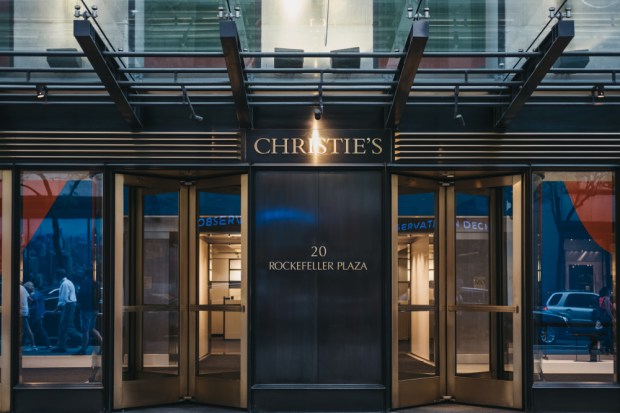Christie’s Brings Blockchain To The World Of Art

While much has been said and written about the blockchain in recent years – good and bad – generally speaking, few have ever really considered it as an artistic venture. In the sense that anything ingenious is a work of art, one could say that distributed ledger is an art all on its own – but that would be a bit of a stretch.
But though technology and art by nature seem to be fundamentally different things with different purposes, sometimes they can come together in unexpected ways. In that spirit, it seems that art dealer and auctioneer Christie’s is making a technological upgrade: This fall, it will pilot a new blockchain application that will encrypt the registration of art transactions. The pilot will be done in collaboration with Artory, a blockchain-based digital registry for the art market.
Christie’s Chief Information Officer Richard Entrup noted in an interview that the collaboration with Artory marks a first in the art industry among global auction houses. He added that the pilot has been paired with the Barney A. Ebsworth collection, a large trove of privately held 20th-century American art that is estimated to exceed $300 million in worth.
“The entrepreneurial spirit of the Ebsworth family and their embrace of leading-edge technology makes Christie’s November sale of the Ebsworth collection an ideal platform for our clients to experience this technology for themselves and to explore the advantages of having a secure, encrypted record of information about their purchased artwork,” Entrup noted.
As a result of the pairing, all items sold from An American Place: The Barney A. Ebsworth Collection sold at Christie’s this November will include a secure, encrypted certification of the sale. According to Entrup, each successful bidder will not only get their purchased art, but also a digital record of the sale that will be permanently entered into a blockchain-based ledger. That transactional data will include a purchase description, verification and final price listing.
“The powerful draw of this product for us is that the Artory team innately understands the needs of today’s art collectors and the broader desire within the industry to embrace new technologies that will help the marketplace evolve,” Entrup noted. “Within the collector community, authentication of the product is an incredibly pervasive and important issue.”
That fact is borne out by the numbers. The Geneva-based Fine Arts Expert Institute (FAEI) said in 2014 that more than half of all artwork they looked at was either forged or not associated with the right artist. It’s a big problem, particularly when consumers are paying millions and even tens of millions of dollars for these pieces.
That goal of Artory – and other arts-focused blockchain firms – is to attach a truth record to a piece of art over its lifetime, so that wherever it goes, its entire transaction history goes with it. If someone is trying to sell a piece of blockchain-registered art but doesn’t seem to have any record of having bought it, the odds are good that the painting is either stolen or forged.
The goal is to untap the potential to really change the entire security picture in the field of art collecting, and we believe this will absolutely have an effect on how consumers purchase works of fine art going forward, according to Entrup.
Challenges still remain, most experts agree – particularly around matching every artwork to a blockchain entry, especially when artists have created several variations or renditions of a piece. Matching a specific digital identity to a physical edition is difficult when there are multiple physical editions.
That will likely be less of a challenge with the Ebsworth collection, as all of the pieces are one-offs. Works by Jackson Pollock, Willem de Kooning, Georgia O’Keeffe, Jasper Johns, Marsden Hartley and Charles Sheeler will be featured, among others.
And for those who don’t have the funds to own a Jackson Pollock or Georgia O’Keeffe of their own – and thus will miss the thrill of having blockchain-encrypted artwork – can at least see the artwork before it returns to private collections.
The exhibitions are open to the public in San Francisco at Minnesota Street Project Oct. 16 – 20, and in Los Angeles at Christie’s Beverly Hills Gallery Oct. 23 – 27.
